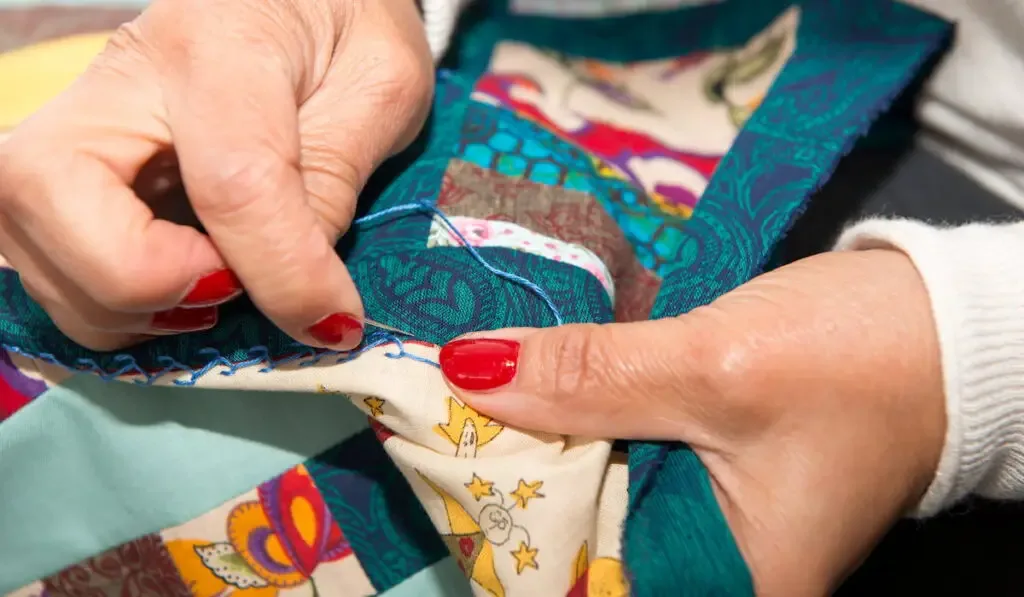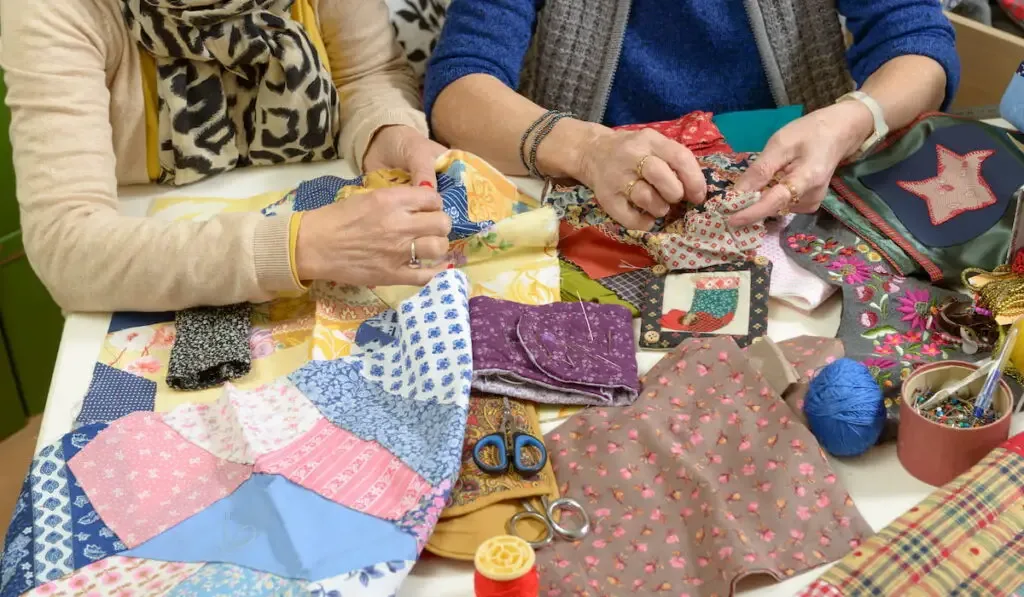In your early quilting days, stitch length may not be one of those things you worry about. But as you become more experienced, you realize that you must vary your stitches per inch depending on the project. Inevitably, you wonder what the ideal number of stitches per inch is.
How many stitches per inch are ideal for quilting?
The optimal number of stitches per inch for quilting varies with projects, fabric type, and quilting methods.
However, in many cases, a stitch-per-inch average of around 8 to 12 stitches per inch works with most quilting styles and produces top-quality seams.
Below, we discuss how many stitches per inch you should use for quilting. We also offer more insight into stitch length and much more.

How Many Stitches per Inch Are Ideal for Quilting?
As previously highlighted, the number of stitches per inch for quilting varies. Depending on the project, material, quilting method, and your experience, you can use more or fewer stitches per inch. Nonetheless, you can use 8 to 12 stitches per inch for most projects and quilting styles.
Note that when quilting lightweight, loosely woven fabric, you may have to work with more stitches per inch. This may mean working with around 12 to 16 stitches per inch.
Using more stitches per inch with such materials ensures durability. It also gives more control while stitching.
Besides lightweight, loosely woven fabric, you will benefit from using more stitches per inch when working on stretchy fabric. When quilting around curves, a higher number of stitches per inch also helps.
Contrarily, when you quilt thick or multi-layered fabric, fewer stitches per inch make things better. Needles easily leave stitch holes in thick materials like vinyl and leather. But if you use fewer stitches per inch, the overall damage is negligible.
Stitch Length
The number of stitches per inch you use while quilting is dependent on your stitch length. As the name says, stitch length is the length of your stitches.
Basically, if you have longer stitches, you will have fewer stitches per inch of fabric. On the flip side, if you have more stitches, you will have higher stitches per inch.
Here is how it works:
- If your stitch is 0.09 inches long, you will have (1 ÷ 0.09) stitches per inch = 11.1 stitches per inch.
- If your stitch is 0.05 inches long, you will have (1 ÷ 0.05) stitches per inch = 20 stitches per inch.
As you can observe from the examples above, the shorter stitch produces more stitches per inch. So, as we said before, longer stitches leave you with fewer stitches per inch.
When You Hand Stitch a Quilt, How Many Stitches Should You Make per Inch?
When hand quilting, the number of stitches you make per inch still depends on the material, project, and quilting method. So, if you are working on light, loosely woven, or stretchy fabrics, use more stitches per inch. But if the fabric is heavy, you need fewer stitches per inch.
Besides the factors stated above, the number of stitches you make per inch while quilting may depend on your experience. Generally, less experienced hand quilters use fewer stitches per inch. On the other hand, the pros use more stitches per inch.

Stitch Length on Machines (How to Know Your Stitches per Inch on a Machine)
On sewing (quilting) machines, the stitch length is typically indicated in millimeters. So, the 1.5, 2.0, 2.5, 3.0, and so on, you see on machines are in millimeters (mm).
So, how do you determine stitches per inch from these values? Well, all you need to do is convert 1 inch to millimeters and divide that value by the machine stitch lengths. This is what we mean:
- 1 inch equals 25.4 millimeters.
- To get the number of stitches per inch when you set the machine to a stitch length of 2.0, divide 25.4 by 2.0.
- So, with a stitch length of 2.0, your machine will give you 12.7 stitches per inch.
Here’s How Many Stitches to Make per Inch for Quilting
Away from the overview above, below are specific stitches-per-inch recommendations for quilting. The recommendations depend on fabric type and quilting method/stitch.
Stitches-Per-Inch Recommendation Based on Fabric Type
| Fabric Type | Stitches per Inch |
| Lightweight Fabric Examples: chiffon, organza, poplin, and voile. | 10 – 16 |
| Mediumweight Fabric Examples: faille, chambray, corduroy, and crepe. | 10 – 13 |
| Heavyweight Soft Fabric Examples: velour, fleece, and terry cloth. | 10 – 13 |
| Heavyweight Structured Fabric Examples: acrylic, canvas, thick jacquard, and double-faced wool. | 7 – 12 |
Stitches-Per-Inch Recommendation Based on Quilting Method
| Quilting Method/Stitch Type | Stitches per Inch |
| Basting Stitch | 4 – 5 |
| Machine Quilting | 8 – 12 |
| Stay-stitching | 12 – 16 |
| Quilt Piecing | 16 – 18 |
| Free Motion Quilting | Maximum (set the machine stitch length to 0) |
Why Are Stitches per Inch Vital While Quilting?
- Using fewer stitches per inch when you quilt heavyweight fabric on a machine reduces the significance of needle hole damage.
- The number of stitches per inch you use while basting influences quilting speed and ease of stitch removal.
- When working with stretchy or lightweight fabric, using more stitches per inch prevents gathering and pulling.
- More stitches per inch will give you stronger seams, which may be good in some cases. But sometimes, strong seams may damage your fabric.
- When working with thicker threads, using fewer stitches per inch is vital. Thicker threads can leave large needle holes, so you may disfigure your fabric if you use a higher number of stitches. Besides, thicker threads have stronger pull, so your seams may be too tight for the fabric if you have too many stitches per inch.
- When working with finer threads, we recommend using more stitches per inch. Finer threads have relatively weaker pull, so you need more stitches to ensure the seams stay intact.
- Generally, when you use fewer stitches per inch, you can remove the stitches readily. But if you use more stitches per inch, the stitches would be harder to remove.

Final Take
Using 8 to 12 stitches per inch is okay for quilting in most cases. However, depending on fabric type, stitch type, experience, and project type, you may have to vary the number of stitches you use per inch.
Generally, use more stitches per inch when you need stronger seams or use finer threads. Then use fewer stitches per inch when you need milder seams or use thicker threads.
